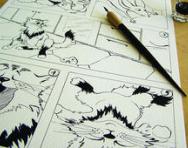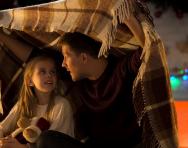Storytelling support for Key Stage 1 children
Activity 1: Visit the library
If they are not already members of a local library, take your child along and sign up (for free!) today!
A library provides access to a wide range of books and materials, which can be used to help research homework, as well as to explore the wonderful pleasures of reading.
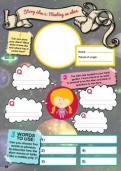
Download a FREE Creative Writing toolkit!
- KS1 & KS2 workbooks
- Bursting with fill-in prompt sheets and inspiring ideas
- Story structure tips, style guides and editing suggestions
Sit down and read to them, or let them read to you. Once they have begun to read for themselves they should read as widely as possible, all kinds of stories and non-fiction. It will widen their horizons and inspire their imagination.
Activity 2: Developing an opinion
If they really like or dislike a book, encourage them to identify why. Is it the story line or the characters? Who is their favourite character in the book? Perhaps the story goes too slow or too quick for them?
This ties in with the National Curriculum; children of this age are encouraged to distinguish between fiction and non-fiction and to comment on characters and ideas.
Activity 3: Creating a storyboard
Storyboarding will encourage both creativity and literacy.
Divide a piece of paper into six or eight squares with room underneath for some words. Stories are drawn using a sequence of pictures, accompanied by simple sentences explaining what is happening. This is particularly useful for reluctant writers, since it does not require them to write too much at any one point. However, it does mean they have to do some writing, think logically and material has to be produced in sequence – all skills that will be useful in school.
Storyboarding will increase familiarity with spelling simple words, as well as encouraging them to try out new ones. Finding ideas for storyboarding is not difficult – your child could write about animals (their pets perhaps?), a place they have visited, a fairytale character or a sporting star.
Cut out a picture with some people or animals in from a magazine or travel guide and ask the simple question, “What happens next?” What happens when the people or animals start moving? Where do they go? Have they hidden from someone? Are they having a treasure hunt? Has someone got lost?
Discuss the idea with your child, using a few leading questions. This will give the basis for a story that the child can then illustrate on their storyboard.
Sign up for personalised story-telling
Madame Kalamazoo’s Magical Mail , delivered via email by the National Theatre, is a series of daily, interactive stories set in children’s own homes, featuring the children themselves as the main characters.
Sign up for free to receive daily emails from a rarely-seen storyteller called Madame Kalamazoo. The mysterious racconteur knows children's names, makes them laugh and takes them on daily imaginative adventures. If they choose to, children can go a step further than simply reading their magical mail and can contribute artwork to help move the stories along in an act of collective storytelling with other children across the country.


Give your child a headstart
- FREE articles & expert information
- FREE resources & activities
- FREE homework help





